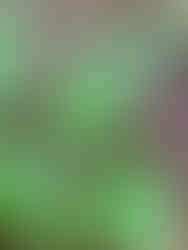April 29, 1852.
There is a slight haziness on the woods, as I go to Mayflower Road at 2.30 P.M., which advances me further into summer. .... The pines have an appearance which they have not worn before, yet not easy to describe. The mottled light (sunlight) and shade, seen looking into the woods, is more like summer. But the season is most forward at the Second Division Brook, where the cowslip [marsh marigold] is in blossom....
The mayflower on the point of blossoming. I think I may say that it will blossom to-morrow. The blossoms of this plant are remarkably concealed beneath the leaves, perhaps for protection. It is singularly unpretending, not seeking to exhibit or display its simple beauty. It is the most delicate flower, both to eye and to scent, as yet. Its weather-worn leaves do not adorn it. If it had fresh spring leaves it would be more famous and sought after. .... I discover a hawk over my head by his shadow on the ground; also small birds. -H.D.T.

April 29, 2021.
At 3 p.m. it is pouring out at 52 degrees, but undaunted with my Thoreau-style umbrella and waterproof pants and coat I head down the steep banking of the Town's Hillcrest Conservation Land to Kennedy Pond, along Second Division Brook. My last visit here was on April 11. On my left, water rushes loudly out of a culvert into a stream which is flooding over the streambed bankings at the bottom. It is here that I visit again a sixty-foot square area of yellow archangel plants, spreading thickly across the hillside. Many of the plants (considered an invasive), which have shot up to eight inches or more and are budding, have lost the strong white contrast on their leaves.
On the flatland below, under the mature white pines, the forest floor is thick with Canada mayflowers, separated only by the pathway through it. Where Thoreau's Mayflower Road exactly was near Second Division Brook is not clear from historic maps and his journal entries, although Thoreau botanist/researcher, Ray Angelo, places it on the west side of the brook, where I am today. I cannot help but think that this area, somehow perfected suited for this flower may have been exactly the place to which Thoreau was referring. But, Ray Angelo's description of Mayflower Road, and Thoreau's description of the mayflower plants that he finds, indicate that Thoreau's mayflower was Epigaea repens, a different species than the Canada mayflower (Maianthemum canadense) that I see today. (Both mayflowers, low-creeping, ground cover plants with delicate, small whitish flowers, have similarities. The epigaea, Massachusetts' state flower, was apparently named by the Pilgrims after their ship and their own English mayflower (Convallaria majalis), what we call European lily-of-the-valley, another well known creeping ground cover with white, fragrant flowers. Epigaea used to be abundant, but being easily disturbed and overpicked has been on the state's endangered list since 1925.)
For me today, though, in this space where my imagination meets this ebullient, thick carpet of vegetation, leaves glossy and bright from the rain against the darkened masts of thick pine trunks, this is "my Mayflower Road." Much of these simple, elegant plants show still-greenish flower buds, in preparation for bloom. At the base of many of the white pine trunks are deposits of white foam like within a churned-up brook, which in my conscious recollection, to use Thoreau's words, "have an appearance which they have not worn before." I learn the foaming is from the rain collecting and interacting with soap-like constituents in the trees’ sap as it runs down the trunks.
I walk along the western shore and scare up a male and female duck from a small cove. Nearby many wild hosta along the water’s edge, skinny but tall ferns as high as my thigh, almost prehistoric looking, have curled bracken-like fronds that are opening up. A few of the plants are open with full lush fronds of simple wide leaflets - eagle ferns. Waterlily pads are greatly numerous now, scattered across the entire pond. I photo a yellowish green-and-red mottled one nearby, using my umbrella to lessen the reflective light on the water, saturating the colors interestingly. A red maple, pitched horizontally above the water, still shows life in its springtime colored display despite its collapsed state.
Before I head home, I visit the Rogers Land and Community Garden at the mouth of Second Division Brook where it empties into the Assabet. The gardening space is now set up with fencing. A sole Canada goose, which I am told by a dog walker has become a resident for the last two weeks, waddles in the field. It provides much comic entertainment as it struts about the premises as if the owner and caretaker.
I verify again, by the shape of its seeds, that the tree I found on April 11 is an American Elm - a medium to small size specimen, so a new growth after the mid-1900s blight of Dutch Elm Disease. I’m hoping to find the yellow flowers of the cowslip [marsh marigold] or even a yellow blooming stand-in like the field mustard, but find none. I do see the tiny flowers of the shepard’s purse and those of the red deadnettle. The buds of the hairy bittercress indicate it is almost out, and the common yarrow plant, with its very fine, feathery leaves, is on its way.
At the far end of the field above the brook, I see and hear perhaps forty or more red-winged blackbirds, chucking and buzzing as they move about from tree to tree. I stoop to examine a flower below, and lost in thought hear a hawk’s call. As Thoreau did this day, I look up to see a hawk above my head - a red-tailed - perched in a tree.






















Comments